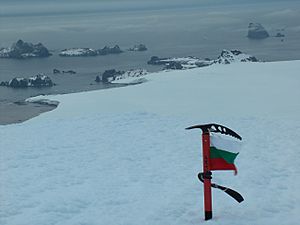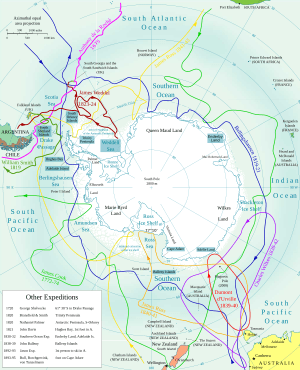William Smith (mariner) facts for kids
Quick facts for kids
William Smith
|
|
|---|---|
| Born | 1790 |
| Died | 1847 |
| Nationality | UK |
| Occupation | ship captain |


William Smith (born around 1790, died 1847) was an English ship captain. He was born in Blyth, Northumberland. Captain Smith is famous for discovering the South Shetland Islands. These islands are a group of islands (an archipelago) located near Graham Land in Antarctica.
His discovery was very important. It was the first time anyone had found land south of 60 degrees south latitude. This area is now part of the Antarctic Treaty area.
Contents
William Smith's Early Life and Training
William Smith was the oldest son of William and Mary Smith. Records from Earsdon Parish show he was baptized on October 10, 1790. These records are kept at Woodhorn Museum.
William had a younger brother named Thomas and a sister named Mary. His father was a joiner, which is someone who builds things with wood, from Seaton Sluice.
In the 1700s, many boys started learning to be sailors at age 14. They would train for seven years. William Smith began his training in the "Greenland whale-fishery." At that time, Britain had a large industry that hunted whales, including in places like Greenland.
During his career, William Smith worked with Richard Siddins. Siddins was a famous traveler. He shared a lot of information about early Fiji. He also liked to hold church services on his ship in Sydney Harbour.
By 1811, William Smith became a part-owner of a ship. The ship was named The Williams. It was being built in Blyth, Northumberland. The ship was finished in 1813. It weighed 215 tons and had six small cannons.
How Antarctica Was Discovered
In 1819, Captain Smith was sailing The Williams. He was carrying cargo from Buenos Aires to Valparaíso. He sailed further south around Cape Horn. He did this to find the best winds for his journey.
On February 19, 1819, he saw new land. It was at 62 degrees south latitude and 60 degrees west longitude. He did not land on it that day. Based on these coordinates, it was most likely Livingston Island.
Naval authorities did not believe his discovery at first. But on another trip, on October 16, he landed on the largest of the islands. He named this island King George Island. He named the group of islands the South Shetland Islands. He chose this name to honor the Shetland Islands in Scotland.
At the start of 1820, the British Royal Navy hired The Williams. Captain Smith and Lieutenant Edward Bransfield were on board. Their mission was to map the newly found islands. During this trip, they also discovered the Antarctic Peninsula.
Places Named After William Smith
Several places in Antarctica are named after William Smith. These include Smith Island and Cape Smith. Both are located in the South Shetland Islands.
Images for kids
-
Williams Point on Livingston Island, the land discovered by William Smith on 19 February 1819.
-
Smith's and other early voyages in the Southern Ocean
See also
 In Spanish: William Smith (marino) para niños
In Spanish: William Smith (marino) para niños



